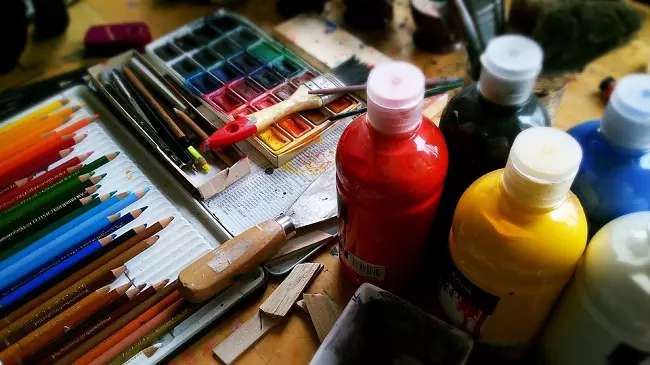Surprising things used for painting
Ox gall and a baby's first cut hair are just two of the strange painting materials not many people would think of. But - beside some others - they are still used today, at least occasionally.
The composition of painting tools might surprise many... (Photo: pixabay.com / bodobe)
Linseed
Linseed in known to be a healthy source of nutrition, and it's widely used not only by the food industry and in the manufacturing, but also as a paint binder - especially for making oil paints. Most of the times, it is used as a carrier, and is popular not only because it dries slowly - so the painting can be worked on for several hours, sometimes even days -, but also due to the nice, glossy look and durability.
Spiny murex
The spiny murex and some other predatory sea snails were once highly prized among textile makers, but this kind of sympathy was surely one-sided, as most of the times hundreds and thousands of the tiny sea snails were captured and killed to make only a few purple garments. Creating the Tyrian - or royal - purple was indeed a time consuming and hard work, because the dye is only present in the mucous of the snails, and according to David Jacoby no less than 12 000 specimens of Murex brandaris snails were needed to get just 1,4 g of pure dye. This amount was just enough to paint the trim of one garment. It's no surprise that only the richest people could afford garments of royal purple color, and this way, these clothes indicated the high rank of their wearers.
Baby's first cut hair
First of all, it's important to assure everyone that - obviously - no babies were harmed in making the extremely soft calligraphy brushes that were crafted using young children's first cut hair. Nowadays, these kind of brushes are quite popular as souvenirs too, but they were originally used because contrary to many other types of brushes - like goats' or horses' hair brushes -, they can be extremely soft. While sometimes more tough and firm brushes were preferred, some methods work better with the softer ones.
Ox gall
When seeing a pretty watercolor painting of - for example - a nice flower, or perhaps the starry night sky, one of the last things that come to your mind might be bile. Even though most watercolors are still made using this material... Ox gall is traditionally used as a wetting agent, and its "mission" is to help the watercolor paint become the king of highly liquid and blendable paint that makes it so precious in the eyes of many painters. As the dried extract of the animals' gall bladders are not quite appreciated by vegan painters, there are now several types of so-called vegan watercolor paints, and buying synthetic ox gall for painting is also an option.
Eggs
Throughout the Middle Ages, egg tempera was one of the most frequently used painting medium, and though if was not always made using eggs, thanks to its availability, egg yolk was still one of the most popular binder medium. Most of the times egg yolks were used with other agents, such as vinegar or even wine, to prevent the paint from cracking. Still, egg tempera paintings had to be painted in several, thin layers - as otherwise it was prone to crack...
Other less-known materials...
The list does not end here - you can truly see how creative artist were when using the everyday materials they found around themselves for creating painting tools. Animal bones were charred for making bone charcoal, beeswax and fat are some of the main materials used for the making of oil pastels, and sepia, well, as the pigment's name says it, is made out of the ink sac of the common cuttlefish (Sepia officinalis). Kermes insects were once used for making a red pigment - called King's red -, while carmine dye is made from the carminic acid that the cochineal insect produces. Gelatin - made out of the skin, hooves and bones of farm animals, and sometimes even fish - is also frequently used to make inks, and is often added to paints, such as the Japanese gansai paints, as a kind of binder.
Anita Diós
August 2018

